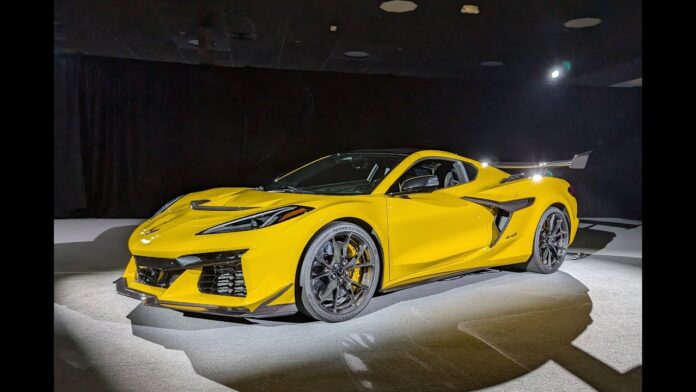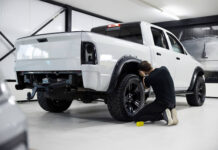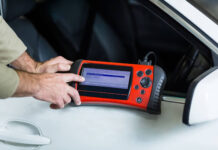The 2026 Chevrolet Corvette ZR1X is not another new step in the story of the legendary sports car of America; it is an incredible step towards the realm of the hypercars. This car is the most highly electrified and sophisticated Corvette to date, which is why it was introduced by General Motors as the symbol of pure mechanical engineering excellence. Based on the tradition of the Corvette range and the 2023 E-Ray hybrid, the ZR1X indicates that Chevrolet did not give up on its performance and technical innovations.
Masterpiece of the Engineers- Powertrain:
The engine that sits at the core of the ZR1X is the twin-turbocharged V8 LT7, which is a piece of engineering masterclass and ambition. Acting like a monster, this 5.5-liter DOHC engine is incredible, producing 1,064 horsepower with 8 28 lb-ft of torque, and that is not the end. The high-speed ram air effect allows achieving the maximum production of up to 1,090 hp. The internal combustion engine is complemented by the electrified all-wheel drive system that supplements 186 hp and 145 lb-ft of torque on the front axle. That adds up to an eye-watering 1,250 horsepower, really making it a hypercar.
Also read: Tesla Robotaxi Launch on June 22, 2025 | Elon Musk’s Vision for Self-Driving Cars
Lightning Speed: Stats of Performance
Out of this, Chevrolet prides itself on the ZR1X being able to accelerate faster than 60 mph and reach its peak of 233 mph in under two seconds. Such numbers not only make it much higher than regular supercars, but also give it a direct rivalry with European hypercars such as the Ferrari SF90 XX and Lamborghini Revuelto, which cost far more. Things like power delivery, traction control, and even the turbocharger technology have been tuned especially towards the track, making the ZR1X not only a super powerful car but one that can run with the best of them all.
Precision Handling and Braking
Driving the ZR1X is described as a deeply visceral experience. On the track at the Circuit of the Americas, the car’s Brembo carbon-ceramic brakes demonstrated relentless stopping power—15.7-inch rotors with six-piston calipers up front and 15.4-inch rotors with four-piston calipers at the rear. These brakes provide consistency even in blistering heat, allowing drivers to push hard lap after lap.
The ZR1X also features the ZTK Performance Package, including Michelin Pilot Sport Cup 2 R tires, Magnetic Ride Control dampers, an electronic limited-slip differential, and a 1,200-lb downforce aero kit. Together, these components give the car the ability to not just go fast but to stay fast, maintaining stability through corners and under heavy braking.
Electrification and AWD Innovation
Unlike the rear-wheel-drive ZR1 of the past, the ZR1X uses a front-mounted electric motor powered by a 1.9 kWh battery and electronics stored within the transmission tunnel. This configuration gives the car electrified all-wheel drive, allowing for quicker launches and better grip. The system cleverly integrates with the gasoline engine to deliver seamless power delivery, whether you’re accelerating out of a tight corner or surging down a straightaway.
Aerodynamics: Form Meets Function
Visually striking yet functionally efficient, the ZR1X’s aerodynamics are engineered for maximum performance. A pass-through hood duct channels air over the roof and rear wing, reducing front-end lift and boosting rear downforce. Additional components like a front splitter, dive planes, underbody strakes, and a massive rear wing have been refined through CFD simulations, wind tunnel testing, and real-world track tuning. Compared to the Z06, 2026 Chevrolet Corvette ZR1X generates 33% more downforce with only a negligible increase in drag.
Also read: 2026 Jeep Cherokee Return with Hybrid Tech, Sleek Design & Affordable Pricing
Technological Innovations in the LT7
The LT7 engine isn’t just about brute force. It’s a sophisticated piece of technology featuring twin 76-mm BorgWarner turbochargers, the largest ever fitted to a production car. These turbos are managed by electric wastegate and blow-off valves, and pressure sensors that allow them to maintain speed even when the throttle is lifted, minimizing turbo lag.
The engine also employs dual fuel injection systems, direct injection for normal driving, and port injection that kicks in under wide-open throttle. During peak output, the system can pump fuel at two gallons per minute, underscoring the engine’s thirst for performance. High-tech materials and CNC-machined combustion chambers ensure reliability under extreme pressure.








